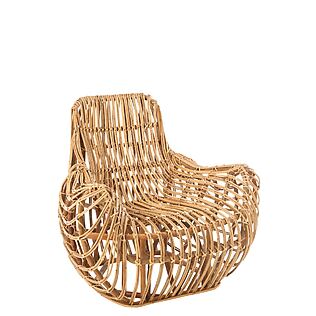The stylistic era of the Roaring Twenties and contemporary jewelry design form a fascinating intersection. Art Deco (c. 1920–1935) is considered perhaps the most influential period for the design of engagement rings. What we perceive today as the "classic, glamorous" engagement ring was largely defined during this time.
This aligns with the fact that demand for Art Deco engagement rings has risen significantly again in recent years. This trend is driven by the desire for uniqueness and individuality in an era where mass production dominates the jewelry market. Today's couples are looking for engagement rings that stand out – rings that tell a story and reflect their personal style.
Art Deco, as Art Movement , was a direct reaction to the flowing, organic Art Nouveau style. It aimed to radiate modernity, technology, and luxury. With its bold geometric forms and rich colors, the style period symbolizes an era of glamour and sophistication.
Intersections and characteristics of Art Deco jewelry design
Art Deco jewelry design refers to a distinctive style that emerged in the 1920s and 1930s. This style was influenced by the modernist movements of the time, as well as by the industrial age, which brought new materials and techniques to the forefront of design.
By combining these classic elements with contemporary aesthetics and advanced craftsmanship, engagement rings are created that are both unique and robust. They unite the timeless design of bygone eras with the durability and innovative power of modern design.
Engagement rings still show common ground in these four key areas:
A. Geometry instead of Romanticism
While earlier eras emphasized floral and flourishes, the Art Deco ring is architecturally inspired. Art Deco designs are often characterized by strong geometric forms such as circles, squares, rectangles, and triangles. These forms are usually arranged in symmetrical and balanced compositions.
Common motifs include sunbeams, zigzag lines, chevron patterns, and graduated shapes. These patterns reflect the influence of contemporary art movements as well as that of ancient Egyptian and Aztec art, which watches a revival during the Art Deco era.
Design language: clear lines, symmetry, stair-like shapes (ziggurat motifs) and strict geometric frames (hexagons, octagons).
The “Halo” is reinventing itself: A central stone is not simply surrounded, but placed within a geometric frame of smaller stones (“Target” design).
B. The Triumph of Platinum
Art Deco is the era of platinum. New smelting techniques made it possible to work with this hard, white metal. Platinum allowed for finer settings than gold or silver. Intricate "lace" be sawn from the metal, resembling embroidery but durable enough for everyday wear.
The ring became more "industrial" and robust, but at the same time more delicate.
C. Revolution of Cuts
The cut of diamonds adapted to the architecture. Step cuts : Emerald cut, Asscher cut , and baguette diamonds became popular. These cuts sparkle less ("less fire"), but appear like clear ice mirrors ("more brilliance") and emphasize the geometry.
Calibrated stones became the standard: Small gemstones were specially cut to fit seamlessly into the metal channels – a technical masterpiece of the time.

Photo by Chad Populis @cslimm17, via Unsplash
D. Courage to Contrast
Art Deco is not shy. The use of vibrant, contrasting colors is a hallmark of Art Deco jewelry design. Brightly colored gemstones such as rubies, emeralds, and sapphires are often combined with sparkling white diamonds. A major touchpoint is the use of colored stones as accents (not just as the main stone).
Typically: a diamond surrounded by blue sapphires, black onyx or green emeralds to create a graphic black and white or color contrast.
Famous examples of Art Deco style engagement rings
The style is so iconic that both historical originals and modern interpretations have achieved media fame.
- Wallis Simpson (Duchess of Windsor) : Her Cartier is the ultimate example of Art Deco. A massive 19.77-carat emerald (emerald cut) in a platinum setting. It broke with the tradition of the diamond and focused on pure color and geometry.
- Pippa Middleton (Modern Interpretation): one of the most famous rings of recent history. It is not antique, but a perfect example of the Art Deco Revival . An Asscher-cut diamond surrounded by an octagonal halo. It appears flat, geometric, and absolutely in the style of the 1920s.
- Mary-Kate Olsen Cartier ring (circa 1953, but in the late Art Deco style). It features the typical "target" shape: a central diamond surrounded by a wreath of sapphires and other diamonds in a kind of floral design, but with geometric rigor.
- Elizabeth Taylor (The Krupp Diamond ): Although not an engagement ring in the classical sense (but a gift from Richard Burton), the 33-carat Asscher cut is the epitome of Art Deco aesthetics: huge, stepped cut, architectural.
See this post on Instagram
Contemporary Design: How the style lives today
Jewelry designers today rarely copy Art Deco exactly, but rather "reference" it. Craftspeople naturally usually have their own individual approach and are influenced and inspired by various sources. However, upon closer examination, three key influences emerge as dominant.
- Technological change (CAD vs. handcraft) : Original Art Deco rings were sawn by hand. Today, this look is often created using CAD (Computer-Aided Design) and 3D printing. The advantage lies in flawless symmetry (which corresponds to the fundamental idea of Art Deco). Unfortunately, on the other hand, the delicate "crispness" of the hand-sawn antique milgrain edges (tiny bead edges) is often missing.
- Material mix: While the original was strictly white (platinum/white gold), contemporary designers combine Art Deco shapes (e.g., hexagonal settings) with yellow or rose gold. This softens the style's "coolness" and makes it warmer and more modern.
- Sustainability as a driving force: Since genuine Art Deco rings (100 years old) are considered "antiques," buying an original today is a statement for sustainability (no new mining). This influences the design of new rings, which often try to imitate this "old mine" look through special cuts (e.g., old-cut diamonds).

(c) Diamonds Factory Germany
Current Trends (2025/2026)
Are there any discernible trends? We asked experts who gave us a clear opinion. We are currently experiencing a massive "Roaring 20s" revival in bridal jewelry. The following styles, in particular, are in high demand:
- Bezel settings: The stone is not held by prongs, but completely framed by metal. This is very Art Deco, very secure, and currently extremely trendy because it is practical (it won't snag on clothing).
- Baguette side stones: The classic solitaire is currently often complemented by two baguette diamonds on the sides. This immediately creates an Art Deco staircase look.
- Toi et Moi (You and Me): Two-stone rings were popular in the Art Deco style (Napoleon pioneered it, but the Deco movement perfected it with contrasts). The current trend: A diamond meets a colored stone (sapphire or emerald) in different cuts (e.g., pear-shaped and emerald-shaped).
- The "Asscher cut" is making a comeback: For a long time, the round brilliant was the standard. Now, couples are looking for individuality. The square Asscher cut with its deep steps is the "hipster" choice for Art Deco fans.

(c) Diamonds Factory Germany
Custom-made Art Deco creations
The creative freedom and expressiveness of the Art Deco style allow couples to find a ring as unique as their relationship and the moment of the proposal. Whether drawing inspiration from the architectural splendor of the 1920s or incorporating personal elements into the design, anything is possible with an Art Deco engagement ring.

(c) Diamonds Factory Germany
From iconic sunburst patterns and symmetrical layouts to colorful gemstones combined with white diamonds, there are countless ways to pay homage to the original Art Deco spirit. Meanwhile, modern techniques ensure greater durability and wearing comfort.
The future of Art Deco jewelry
Looking to the future, the goal remains to honor the heritage of Art Deco design while integrating the innovations of modern jewelry manufacturing.
Jewelry designers and artisans, as well as luxury labels, want to continue creating engagement rings as distinctive as the stories they tell. In a world where trends come and go, the timeless style of Art Deco will also endure – as a perfect blend of tradition and modernity.

Owner and Managing Director of Kunstplaza. Journalist, editor, and passionate blogger in the field of art, design, and creativity since 2011. Successful completion of a degree in web design as part of a university study (2008). Further development of creativity techniques through courses in free drawing, expressive painting, and theatre/acting. Profound knowledge of the art market through years of journalistic research and numerous collaborations with actors/institutions from art and culture.

















